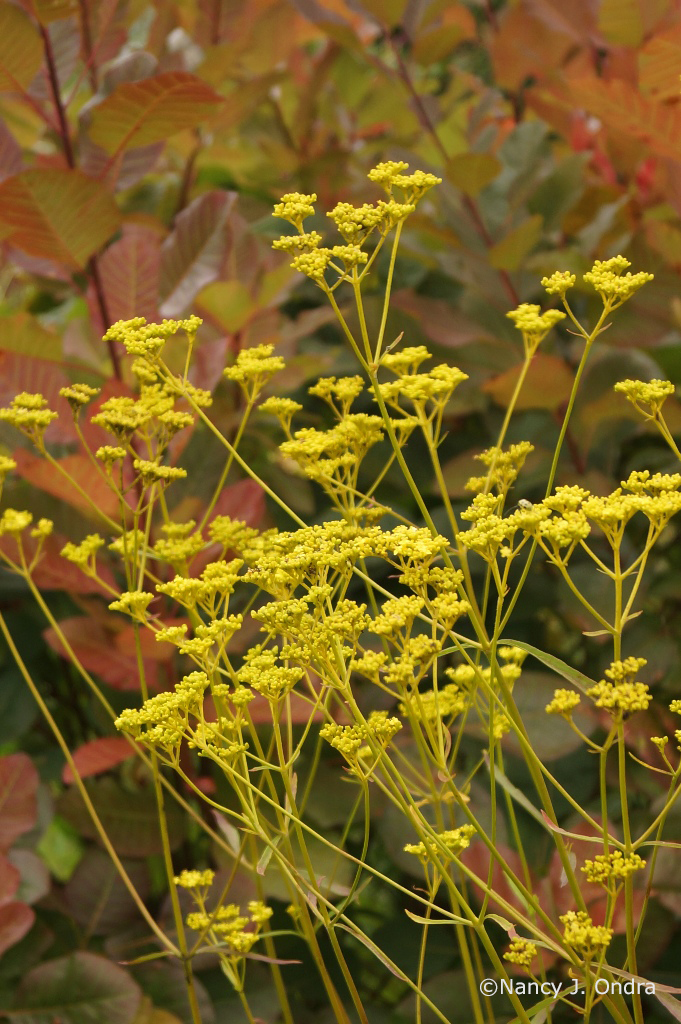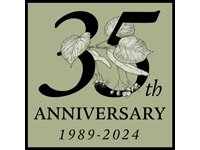Blooms and Berries for Fall

Golden lace (Patrinia scabiosifolia) with New York ironweed (Vernonia noveboracensis)
September is finally here and after the summer some fresh color in the garden is a welcome sight. Sure, there are autumn standards for beds and borders–asters, goldenrods, and the like–but if you want to set your garden apart, it’s worth hunting for some of the lesser known gems. Read on to discover two of our favorites for color, texture, and yes, even deer resistance!
Golden lace (Patrinia scabiosifolia) is a standout for late-season interest for beds and borders. Typically reaching 5 to 6 feet in bloom, it starts flowering around mid-August and is stunning through September, at least. Earlier in the growing season, you hardly notice its wide rosette of lobed green leaves, but once it begins flowering, it never fails to grab attention.

Golden lace with cobalt-blue ‘Black and Bloom’ anise sage (Salvia guaranitica), soft purple Russian sage (Perovskia), and white woodland tobacco (Nicotiana sylvestris) in the Formal Garden at Linden Hill
The slender but sturdy stems branch toward the top, carrying many tiny blooms in a bright lemon yellow color that makes a pleasing change from the usual brassy yellows of other fall bloomers.

Golden lace up close
Golden lace combines easily with a wide range of other bloom colors and is a wonderful partner for shrub and tree partners that have showy fall foliage.

Golden lace against ‘Grace’ smokebush (Cotinus)
Golden lace also produces colorful fall foliage of its own, usually in brilliant reds but shades of orange and deep red to maroon are also possible. That’s a lot of impact from one perennial! Golden lace is easy to grow but not easy to find, so make a note to check with us for plants next spring. (They settle in best if you move them fairly early in the growing season.) Golden lace thrives in rich, moist soil but can adapt to average garden conditions too, in full sun to light shade.

Purple beautyberry (Callicarpa dichotoma)
Beautyberries (Callicarpa) are another excellent addition for an autumn spectacle. The clustered fruits of these deciduous shrubs are so intensely purple that they hardly look real! Purple beautyberry (C. dichotoma) flowers on new growth, with clusters of purplish pink flowers in early to midsummer. Cutting it back to about 6 inches in early spring each year will produce a densely branched, 3- to 4-foot-tall and -wide mound that fits easily into a bed, border, or foundation planting.

Purple beautyberry in a border
The fruits start to color up along the gently arching stems in September, while the leaves are still green. As the weather gets cooler, the leaves take on a greenish yellow to light yellow hue that adds to the spectacle.

Purple beautyberry in October
The leaves eventually drop, but the berries remain for an additional month or two, at least, extending the show through late fall into winter.

Purple beautyberry in November

